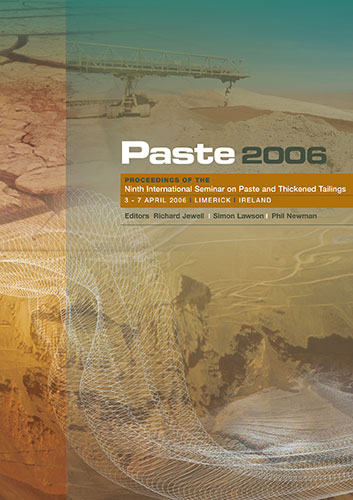Some Practical Aspects of Downtime and Their Causes in the Paste Plant at Zinkgruvan Mine, South-Central Sweden

|
Authors: Tillman, K |
DOI https://doi.org/10.36487/ACG_repo/663_31
Cite As:
Tillman, K 2006, 'Some Practical Aspects of Downtime and Their Causes in the Paste Plant at Zinkgruvan Mine, South-Central Sweden', in R Jewell, S Lawson & P Newman (eds), Paste 2006: Proceedings of the Ninth International Seminar on Paste and Thickened Tailings, Australian Centre for Geomechanics, Perth, pp. 359-367, https://doi.org/10.36487/ACG_repo/663_31
Abstract:
In 1857 mining of zinc and lead ore started in Zinkgruvan. The mine is situated in South-Central Sweden and is today owned and operated by Lundin Mining AB. Present ore production is approximately 815,000 tonnes per year from mainly two orebodies, “Nygruvan” and “Burkland”. The mineralization outcrops on the surface and mining today is to a depth between 350 and 965 m. The predominant mining method was cut-and-fill, using sand for backfilling. Eventually hydraulic, deslimed backfill was introduced. Rock stresses and economic reasons have prompted changes, introducing different benching methods and lately open and panel stoping as primary mining methods (Figure 1). Panel Stoping
© Copyright 2025, Australian Centre for Geomechanics (ACG), The University of Western Australia. All rights reserved.
View copyright/legal information
Please direct any queries or error reports to repository-acg@uwa.edu.au
View copyright/legal information
Please direct any queries or error reports to repository-acg@uwa.edu.au